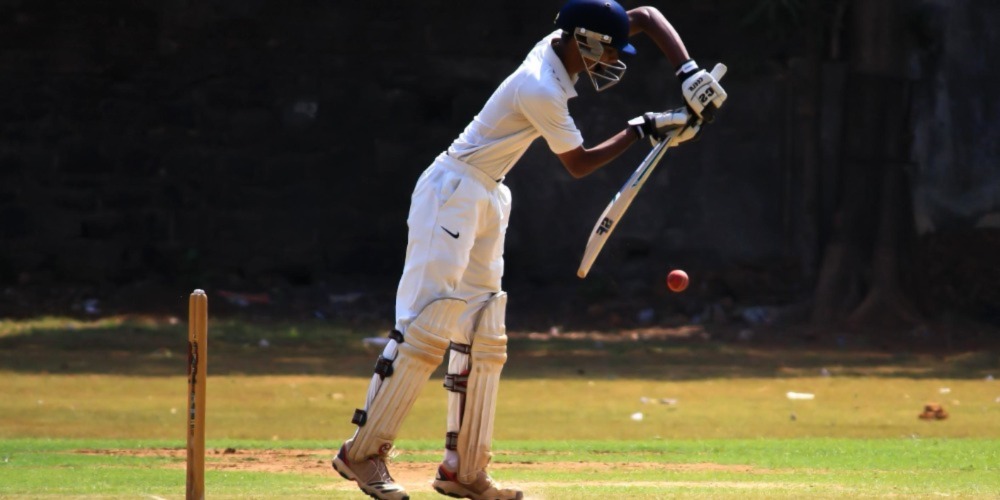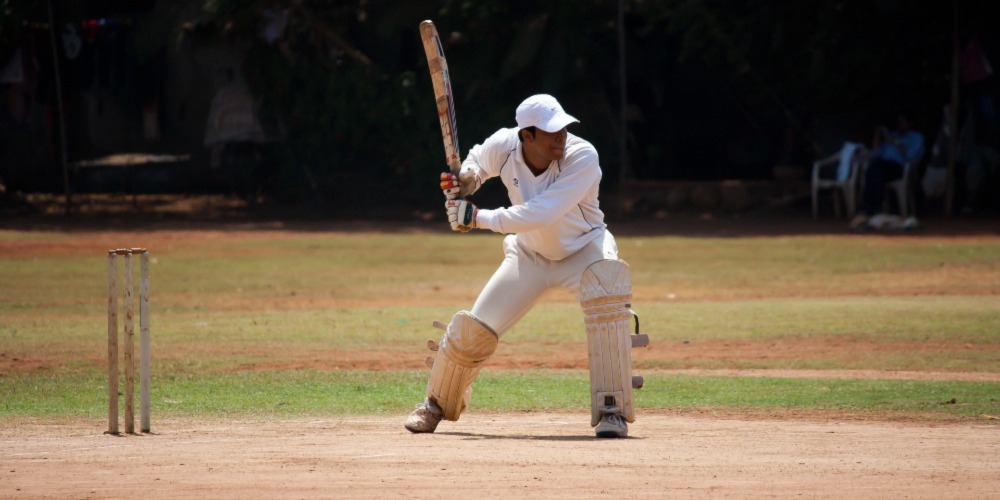Each player is assigned a role in any sport. Let’s take the example of football to help you understand things. A player who is sharp in the forward positions can’t stand at the defending positions. Similarly in cricket, there are certain roles for each player in the playing eleven. To form a fine line-up of 11 players, there must exist great chemistry in the team.
The roles of the players in cricket are significant as the roles of the players in other sports. Cricket is one of the most renowned sports in the world. If your interest in cricket is escalating, you should know about the roles of each player in a playing XI.
Opening Batsmen (1st and 2nd Position Players/ Top Order Batsman)
Whenever any innings initiates in cricket, the first two players coming towards the crease from the batting side are called opening batsmen. The role of an opening batsman is extremely vital in cricket. The opening batsman, one of the players in cricket, has to face a new ball typically against the fast bowlers. It is difficult to play the new ball as it produces great seam and swing. The teams tend to lose a couple of wickets in the powerplay overs.
A good opening batsman tries his best to save the wickets in the initial overs. Well, one of the reasons that opening batsmen have less average than other batsmen is because they have to face tougher conditions. Especially in Test cricket, the role of an opening batsman is one of the toughest roles in cricket. The best online sportsbook sites in the UK demonstrate how the odds of the opening batsman scoring are low as compared to the other types of batsmen.
Top Order Batsman (One Down batsman / 3rd position Player)
Whenever the first wickets fall of any team, the first batsman that comes on the crease is a player of one-down position. The batsman of the one-down position is one of the most significant players in cricket. Typically, one of the best batsmen of playing eleven bats at this position. When a batting side loses an early wicket, the 3rd position batsman has to carry the innings.
He has to save the wicket as well as keep the scoreboard ticking. A team expects a player batting at this position to make a great score. If the openers score well in the match, the player at the one-down position needs to accelerate the innings with a fine strike rate. The cricketing marvels like Sachin Tendulkar and Ricky Ponting batted at this position marvelously for their teams.
Middle Order Batsman (4th and 5th position Players in Cricket)
The batsmen who are composed tend to bat at the 4th position and 5th position. The players batting at the 4th position and the 5th position are expected to play a significant role in building great partnerships with their partners. If the team has a settled set of top-order batsmen, the middle-order batsmen typically arrive in the middle overs. In the middle overs, the captains expand the field and set some of their fielders at the boundary line. This helps the batsman to find gaps and take singles or doubles.
Players in cricket who play the role of the middle-order batsman should have a fine ability to rotate the strike. The more the middle-order batsman rotates the strike, the better will be run-rate of the team. This will assist the batting team in setting a fine total. The position of the middle-order batsman is one of the most significant batting positions for setting the tone of the innings.
Lower Order Batsman (6th position / 7th position / 8th position Players in Cricket)
If the top order and middle-order batsmen set a fine platform for the lower order batsmen, the players at these batting positions are expected to play a fiery knock-in limited-overs cricket. A fine platform means that a batting side is 260/4 after the 40 overs in a One Day International game. The lower-order batsman needs to hit the boundaries often in the death overs while playing the blistering shots. There could be some instances where the teams faced an unexpected collapse.
This means neither top-order batsmen nor middle-order batsmen fired in the innings. At that stage, the lower-order batsman is expected to carry the innings as well as hit in the final overs. Typically, a team does not expect its lower-order batsman to have the ability to carry the innings. A best lower-order batsman should have a great hitting ability and a fine range of shots.
Currently, in cricket, the players like Glenn Maxwell and Hardik Pandya light up the lower-order positions with their scintillating hitting abilities. In the past, Michael Bevan and Michael Hussey are also two of the renowned names of the lower order batting positions. The players who could both bat and bowl, who are all-rounders (to be discussed in the article), commonly bat at the lower order positions.
Bowlers (9th position / 10th position / 11th position Players in Cricket)
The players in these positions in cricket are regarded as the tailenders for the batting side. The batting side does not expect their bowlers to score the runs. However, it would be a bonus for the batting team if the tailender scored any runs. The role of the bowlers is extremely vital in any team. If a team has a great batting line-up but not a fine bowling line-up, the chances of winning decrease for the team. A great mix-up of fine spin and fast bowlers in the side wins the matches for the team. The bowling roles are majorly divided into two categories:
Players in Cricket: Fast Bowler
As the name suggests, the role of a fast bowler is to deliver the bowl at a good pace. Some fast bowlers have a rapid pace. While the other fast bowlers provide better swing and seam in fewer ways. Fast bowling is one of the ways of bowling in cricket. A fast bowler takes a run-up before delivering the ball. He typically initiates the innings with the new ball.

A fast bowler is expected to produce a great art of seam and swing bowling. In the early phase of the innings, a fast bowler tries his best to take at least a couple of wickets with the new ball. Fast bowlers have also been divided categories into some sub-categories – medium-pace fast bowler, medium-fast bowler, and fast bowler. The role of a fast bowler is one of the most significant roles in the game of cricket.
Players in Cricket: Spin Bowler
It is the other way of bowling in cricket. A spin bowler usually takes a small run-up and delivers the ball at a slow pace. However, as the name suggests, spin bowlers generate mysterious spins on the ball to trouble the batsmen. Some types of spin bowlers are difficult to pick for the batsmen as they generate sharp spin.
The spin bowlers are also divided into the sub-categories like an off-spin bowler, leg-spin bowler, and left-arm chinaman. In most cases, the spinners come to bowl with the old ball. However, in the modern era, the team has experimented to open the bowling with spin bowlers. Pakistan has tried Imad Wasim in the Twenty20 cricket during the powerplay overs and has been successful. The captain expects the spin bowlers to generate wickets in the middle orders.
Players in Cricket: Wicket-Keeper
Whenever the playing XI of the team is announced before the game, a player is assigned the role of the wicket-keeper. Who is the wicket-keeper? He is the player who stands behind the wicket when the bowler delivers the ball. A wicket-keeper has to be athletic and sharp to catch any delivery which is coming toward him.

It is one of the toughest roles in cricket, especially in Test cricket. A wicket-keeper stands for approximately 90 overs each day in a 5-day Test match. A team not only expects great athletics on the field from the wicket-keeper but also useful batting performance while he bats.
A wicket-keeper is expected to be a decent batsman. In most cases, the wicket-keeper plays at the lower-order positions but some wicket-keepers also bat in the top-order positions. The notable Australian wicket-keeper Adam Gilchrist was a phenomenal batsman as well as a great wicket-keeper on the field.
Players in Cricket: All-Rounder
An all-rounder is a master of all trades in the game of cricket. He is a player who can provide valuable contributions with both bat and ball. The all-rounder who is specialized in batting but can also bowl is called the batting all-rounder. While the all-rounder who is specialized in bowling but can also bat is called the bowling all-rounder.
Typically the all-rounders are regarded as the match winners in the playing eleven. They are the trump card of any team. On some days, an all-rounder could be contributing with the bat by scoring a blistering fifty and also taking three wickets while bowling. However, due to the pressure of delivering in both the departments of batting and bowling, the all-rounders could have trouble determining in choosing which role they should focus on the most.
Conclusion:
To compose a strong playing XI, a team must form great chemistry in the team. A specific role should only be assigned to a player if he is specialized in that domain. A side should have a great set of top-order and middle-order batsmen, a fine wicket-keeper batsman, and all-rounders who could win the matches for their team.
The roles of the players in cricket are as significant as the roles of other players. Did you understand the roles of players in cricket? If yes, then why should not go to the best online sportsbook sites in the UK to find out which role could be the most valuable in the upcoming Cricket World Cup.
Click here to try the best odd at 22bet Sportsbook